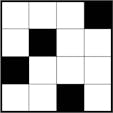Situated between PJ’s Pancake House and the Princeton Garden Theater, the door to the Princeton University Art Museum’s downtown gallery, Bainbridge House, often sits propped open. Nestled inside Bainbridge House is “Undercurrent,” a collection of works split across four galleries by ecofeminist process artist Helène Aylon, spanning the 1970s to the 2010s.
When I visited, Bainbridge House was quiet, dotted sparsely by other visitors. I snagged a paper guide and began to meander through the first gallery. There, a Torah sat open on a pedestal, placing God, or perhaps religious practice, on a center stage for examination. Upon closer inspection, I discovered pink markings on clear film filed between the pages, marking the absence of what the exhibition called “the feminine presence.” The use of marking on film did not break the tradition forbidding of marking the text directly. The piece, titled “The Book That Will Not Close,” seems to be a means of reclamation for Aylon, as she recenters the feminine experience in her own context — Orthodox Judaism.
In the second gallery, I was thrust out of the seemingly solitary religious contemplation of the first gallery and into something more visceral. In the center, pillowcases often used in times of crisis to carry belongings, hung like ropes from the ceiling, marked by the memories of women asked to describe their hopes, sorrows, and fears. Wide swaths of human experience were connected physically by knots and contextually by womanhood. The pillowcases seemed to carry something with them, whether intangible emotional connections or literal belongings: The exhibit dubbed them “sacks.”
Where the second gallery was grounded in its presentation, the third edged toward surrealism. On a mantle sat a print of three cloaked figures crossing a shallow bank that reflected a pale sky. It caught my eye immediately, situated in the corner and separated from the other works. Similar figures appeared in another print mounted to the wall, this time wading through high grass. The lack of modern objects and infrastructure drew me into the past — or, at the very least, into a time and place different from the second gallery that was characterized by recognizable prints of cars and the mundane pillowcases.
Yet the connectivity represented in the ropes of knotted pillowcases made its way into the third gallery, too. The figures, though mystical and unidentifiable, were never alone in their respective prints. In the center of the gallery, once again, was the Torah, this time reinspected through the lens of nine magnifying glasses. Here, Aylon stepped away from the present reality back into spirituality by attempting to reconnect God to “the ancient foremothers,” the exhibit explained, bringing back the female presence that Aylon struggled to find represented in scriptures. The effect was melancholic, and as I lingered there for several minutes, the silence of the gallery settled around me like a grounding weight.
Finally, I moved on to the fourth gallery, where two videos were playing. One depicted two sacks of grain floating down the Kamo River, seeming to depict an essential element of life — food — in movement. The other video portrayed the construction of “Bridge of Knots,” an earlier installation of the pillowcases. As I sat, watching the videos play to completion, then loop back to the beginning, I began to grasp the heart of Aylon’s work. These sacks traversed rivers and exhibits, carrying with them memories or the basics of life itself.
Throughout the exhibit, Aylon examines the ways in which the world is divided by war and tragedy, the complexities of faith through a feminist lens, and the importance of cataloging the voices of women who would otherwise go unrecorded. Most of all, she works to remind us that we are all connected.
Emma Cinocca is a member of the class of 2027 and a staff writer for The Prospect. She can be reached at emmacinocca[at]princeton.edu.
Please send any corrections to corrections[at]dailyprincetonian.com.










